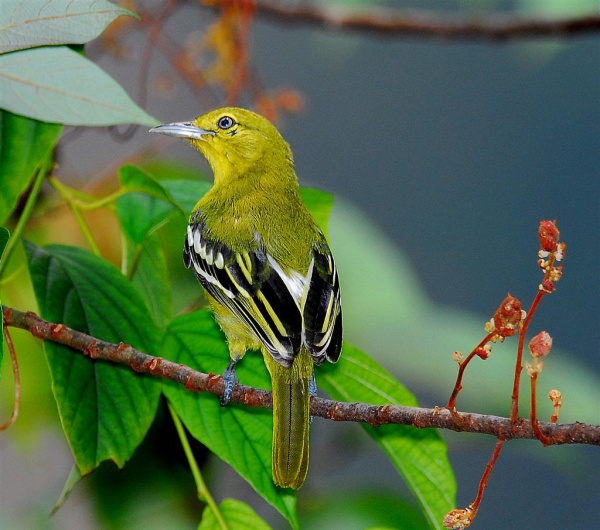Facts About Common iora
The common iora is a small, vibrant bird that flourishes in the tropical regions of the Indian subcontinent and Southeast Asia. Renowned for its striking appearance, the iora's plumage varies across different populations, resulting in several subspecies. During the breeding season, male ioras are particularly eye-catching with their bold black caps and backs, while females exhibit greenish wings and olive tails. Males perform dazzling aerial displays, spiraling through the air to showcase their bright colors.
These birds are social creatures, often seen foraging in small groups among the trees, primarily feeding on insects. They occasionally join mixed-species flocks. The presence of the common iora can be identified by their distinctive calls, which include churrs, chattering, and whistles, along with a melodious trilled song.
Breeding season is a notable time for the common iora. Males engage in acrobatic courtship displays to attract females. They construct cup-shaped nests from grass and cobwebs in the forks of trees. Both parents participate in incubating the eggs, which hatch after about 14 days. However, the nests face threats from predators such as snakes, lizards, and birds like crows. Additionally, ioras sometimes fall victim to brood parasitism by the banded bay cuckoo.
The common iora undergoes molting twice a year, resulting in changes to their plumage that can make subspecies identification challenging. These birds can also host parasites such as Haemoproteus aethiginae.

 Laos
Laos